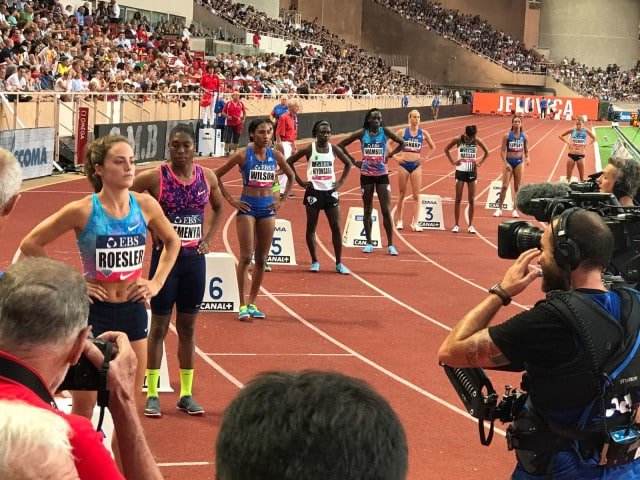Why SA’s World Champs Selections Make No Sense
Athletics South Africa’s (ASA) team for the World Championships in Athletics starting this week has baffled many. Former SA 400m record holder and athletics commentator Arnaud Malherbe explains how the team selection was bungled and could have far-reaching consequences for the sport in SA…

On 4 August, the 2017 World Championships in Athletics will commence, showcasing the world’s best athletes. Well, most of them anyway.
For some South African athletes, they will be watching the opening ceremony with despair, as they know that they too have qualified to be there, but instead they are sitting at home, watching the drama, instead of being in the thick of it.
This is because, despite qualifying according to the International Association of Athletics Federations (IAAF) qualifying criteria, they did not reach the more stringent criteria set by Athletics South Africa (ASA). So, why did ASA set more stringent criteria in the first place? There can only be two reasons for this: financial and ‘quality’.
Budgetary constraints make sense. After all, you cannot send an athlete halfway across the world if you cannot afford to do so. However, the IAAF team manual makes it clear that the IAAF is covering the cost of all selected athletes, so this is not a consideration. ASA can send the largest team possible and it would not impact their finances at all.
Sending ‘quality’ teams is the reasoning ASA uses. They claim to not want to send any athlete that cannot at least reach a semi-final. I do not understand the reason for this. What difference does it make to anyone if an athlete does not make it through the first round? There is no downside to this and instead, you may reap significant benefit. In Moscow in 2013, neither Wayde van Niekerk nor Akani Simbine managed to advance through round 1, but would they have reached their current heights had they not had that initial experience?
Also consider the effect that not selecting athletes has on team morale. Already some athletes who have been selected have come out in defence of their team mates who they feel have been ill-treated. Can Van Niekerk properly focus on achieving the 200m/400m double if he is distracted by knowing some of his friends have been left behind for no logical reason? The athletes have become a very close-knit group recently, which is great to see. Actions that affect one, affect all.
“By not selecting athletes like her, our young generation are deprived from seeing their heroes compete and it may mean that some youngsters will not turn to athletics at all.”
One of my deep seated beliefs is that we need to make our athletes household names and heroes to inspire the next generation. Dominique Scott-Efurd has qualified on the IAAF standard in both the 5000m and the 10000m, but she has not been included in the team. Firstly, the 10000m is a straight final, so ASA’s assertion that they do not want to select athletes that won’t make a semi-final doesn’t hold water. Just by selecting her, she is already in the final. Secondly, imagine a young girl at home watching Scott-Efurd compete and being inspired to emulate her. While Scott-Efurd may not win a medal, by simply competing she could inspire a potential future world champion to take up the sport. By not selecting athletes like her, our young generation are deprived from seeing their heroes compete and it may mean that some youngsters will not turn to athletics at all.
The mere fact of ASA setting different standards is confusing.
To add injury to insult, ASA did not apply their standards consistently. Every athlete who has achieved the IAAF standard should be in the team, so what follows is not meant to be a slight on any athlete. They all deserve to be there.
Mapaseka Makhanya and Jenna Challenor were included in the team for the marathon, despite not reaching the ASA standard and are ranked 100th and 101st in the world. Consider this in the context of other countries, such as Kenya, who are limited to sending only three athletes per event. If it were not for that limit, their rankings would be much lower.
Henricho Bruintjies, in the 100m men, was not selected, despite achieving the IAAF standard, (like Makhanya and Challenor), and being ranked 18th in the world. It is worth noting that ASA rank Bruintjies as 33rd, clearly not taking the three athlete limit per country into account. This ranking is used to justify why he should be excluded as he would not likely reach the top 16 required for a semi-final.
There are two problems with this. Firstly, Bruintjies is ranked 18th when one accounts for entry limits. The www.roadto.de website provides some very useful information on this. Secondly, to reach a semi-final, you must be in the top 24, not 16, as the IAAF have been utilising three semi-finals for well over a decade. Given this, as well as Challenor and Makhanya’s selections, how could you possibly leave Bruintjies out?
Other than Scott-Efurd (ranked 33rd) and Bruintjies, 12 athletes are affected by this and unfortunately, space limitations prevent a detailed account of each individual case.
Suffice it to say that there are selection inconsistencies in each case. The greatest confusion stems from the fact that ASA’s reasoning, as evidenced above, muddies the situation even more, rather than providing much needed clarity.
This leaves 14 athletes sitting at home wondering why they were not selected and what they could’ve achieved if given the opportunity.
READ MORE ON: akani simbine iaaf wayde van niekerk

